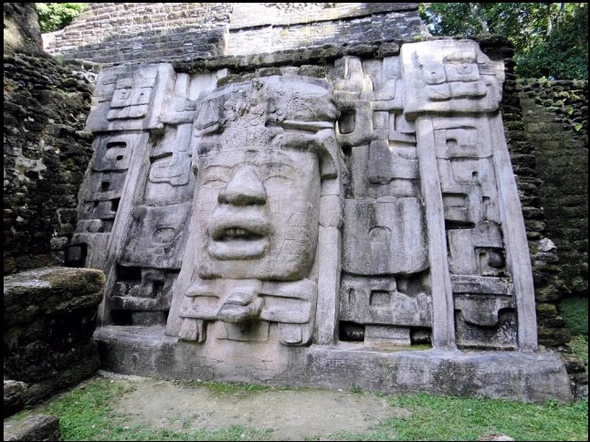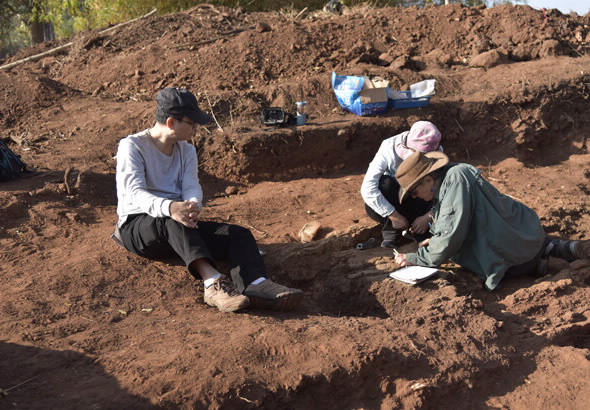 |
| Credit: Lamanai Archaeological Reserve |
ANSTO is participating in a prestigious international project led by Dr Dan Penny at University of Sydney and Dr Duncan Cook from the Australian Catholic University to test the theory that the Mayan Empire collapsed because of climate change.
It involves developing detailed records of climate and social change from a Mayan city that did not collapse.
The multidisciplinary collaborators have pointed out that understanding why some cities are more vulnerable or resistant to climate change is a crucial question with relevance today. Understanding environmental change is also an Australian research priority.
The research, which was funded by an Australian Research Council Discovery Project grant (2018-2020), also aims to identify the successful measures that the Mayans in some cities adopted to survive cataclysmic environmental and climatic changes.
The collaboration, being led by Australian Chief Investigators Penny and Cook, involves international experts in archaeology, geology and palaeoclimate from the US, UK and ANSTO’s radiocarbon dating authority Dr Quan Hua
 |
| Quan Hua (left) at a fieldwork site in Cambodia in 2017 |
Penny and Cook, and ANSTO environmental scientist Hua have collaborated on similar geo-archaeological projects in Cambodia relating to the Angkor Empire.
Catastrophic climate variability, including a 130-year mega drought, has been suggested in studies over the last two decades to explain the historic collapse of the Mayan Empire in Central America between the 8th and 11th centuries.
The collapse has been viewed as an archetypal social collapse yet, despite robust evidence for drought across Central America, archaeological evidence suggests a more complex social response.
This project will reveal what social and/or environmental properties facilitated resiliency in historic urban centres confronting climatic variability.
They have selected the city of Lamanai in Belize, which has an uninterrupted history of occupation that spans more than 3000 years, for the investigation.
Previous research by other groups had determined that there was no discernible loss of population in Lamanai during the megadrought period.
The study will involve the sampling and analysis of lacustrine sediment cores to reconstruct climate history. The samples will be taken from Crystal Lake, which is close proximity to Lamanai.
The fieldwork will also include the collection of speleothems (mineral deposits) from caves in the area.
Both the Massachusetts Institute of Technology (MIT) in the US and ANSTO will be carrying out dating of speoleothem samples. MIT will use the uranium-thorium method to establish their chronologies. However, this approach can be problematic due to possible multiple sources of non-authigenic thorium.
This problem is commonly encountered when dating tropical speleothems. ANSTO will therefore use radiocarbon at the Centre for Accelerator Science to independently date the samples and corroborate the uranium-thorium chronologies.
“Reliable radiocarbon dating of young speleothems using accelerator mass spectrometry has been developed here at ANSTO. This approach has been successfully applied on several tropical speleothems from Australia and Cambodia,” said Hua, who will be traveling to the fieldwork site.
Sediment from Crystal Lake and cultural material from Lamanai found in stratified deposits will also be dated using radiocarbon at ANSTO.
It is expected to be the first scientific study of history of climate and human response from historic Mayan cities in Mesoamerica to challenge the drought-collapse paradigm.
Published: 07/02/2018


